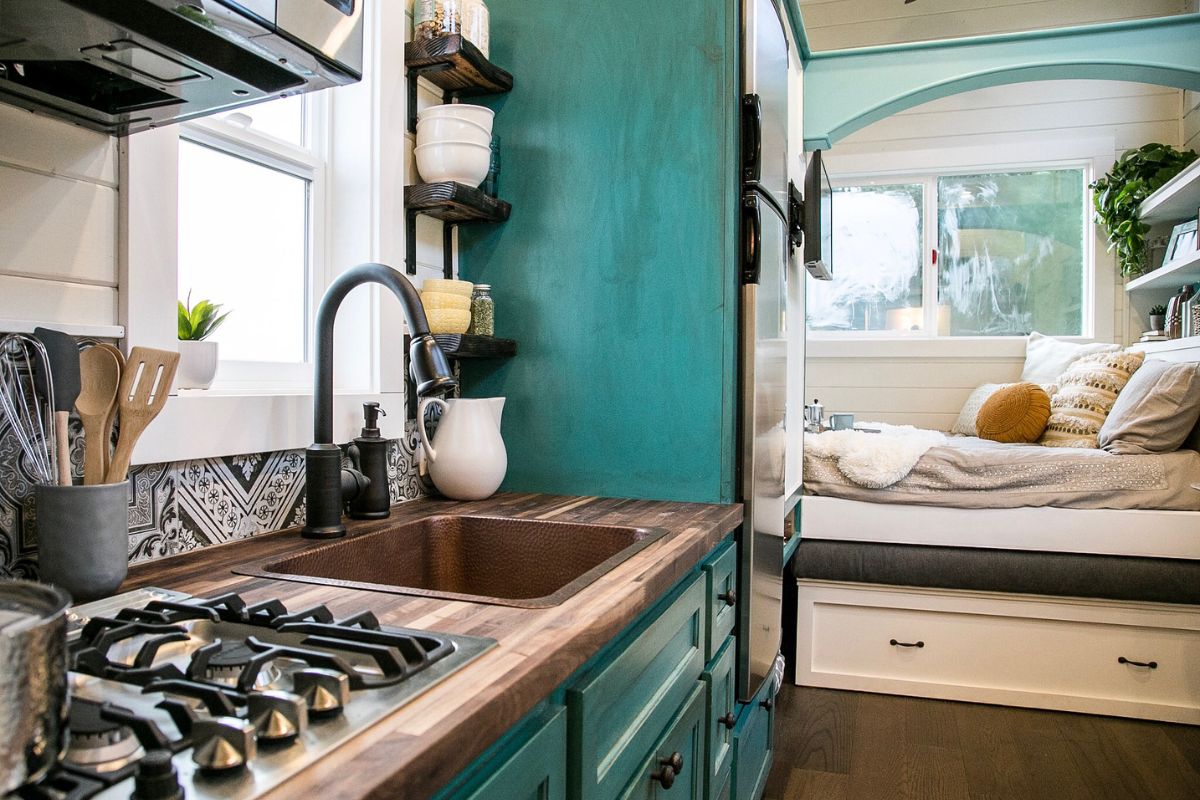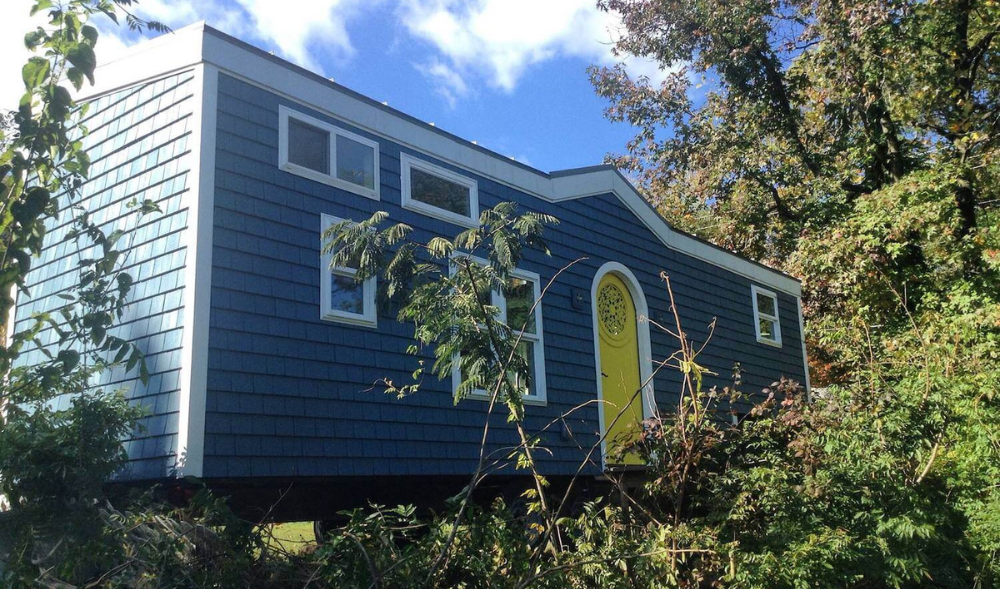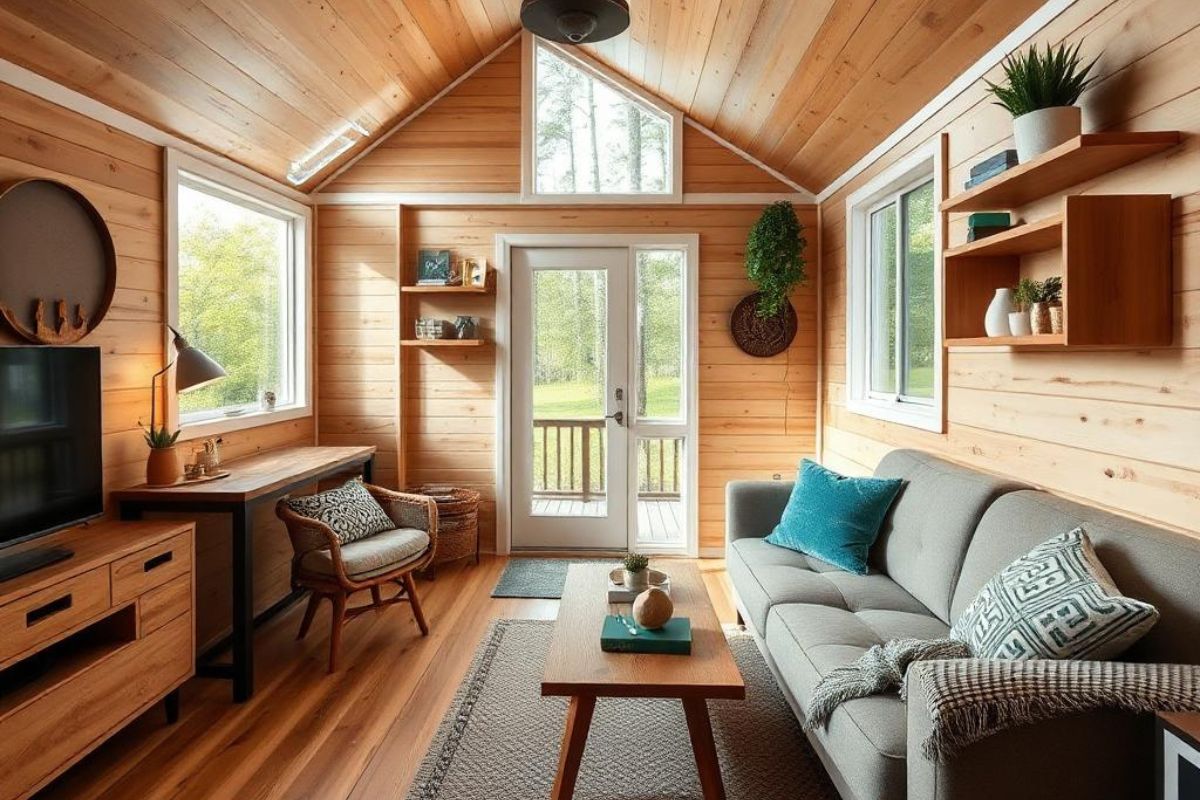For a tiny house that’s cozy and stylish, try insulated foam board skirting—it stops drafts and looks crisp. Reclaimed wood brings rustic charm and solid insulation, while metal panels offer a modern vibe and keep out pests. Stone veneer gives you classic beauty without the bulk, and lattice or trellis options add charm with built-in airflow. Prefer DIY? Fabric or canvas can work in a pinch. Discover how each option boosts both comfort and curb appeal below.
Key Takeaways
-
Insulated foam board skirting is affordable, easy to install, and significantly improves heat retention for better energy efficiency.
-
Reclaimed wood panels offer natural insulation and a unique, rustic aesthetic while being eco-friendly when properly sealed.
-
Metal skirting provides a modern look, resists pests and weather, and is low maintenance with good insulating properties.
-
Stone veneer skirting delivers a realistic stone appearance, is lightweight, and enhances insulation when used with foam backing.
-
Lattice and trellis skirting promotes airflow to prevent moisture, keeps out pests, and can be painted or used to support climbing plants.
Insulated Foam Board Skirting
If you're looking for an affordable and efficient way to protect your tiny house from cold drafts and critters, insulated foam board skirting is a smart option. You can pick up rigid foam boards at most hardware stores, cut them to size, and fit them snugly around the base of your home. These boards provide excellent insulation, helping you retain heat during winter and keep your energy bills low. Plus, foam board is lightweight, making installation quick and manageable—even for DIY beginners. Secure the panels with weather-resistant tape or adhesive, and consider adding vents to prevent moisture buildup underneath. With proper installation, you'll keep unwanted pests out and maintain a comfortable indoor temperature, all without spending a fortune or sacrificing valuable time.
Reclaimed Wood Panels
Looking for a skirting solution that adds character while staying eco-friendly? Reclaimed wood panels are a fantastic option for your tiny house. By using salvaged boards from old barns, fences, or pallets, you’ll cut down on waste and give your home a rustic, one-of-a-kind look. Reclaimed wood naturally insulates, helping keep your undercarriage protected from wind and temperature changes.
To install, measure your skirting area, cut the panels to fit, and secure them with weather-resistant screws. Treat the wood with a sealant to prevent rot and pests. You can play with patterns—vertical, horizontal, or even chevron—for extra visual interest. Reclaimed wood panels blend beautifully with natural surroundings and add instant charm without breaking your budget or environmental values.

Metal Skirting for a Modern Touch
Sleek lines and durable surfaces make metal skirting a standout choice for tiny homeowners aiming for a modern aesthetic. If you want sharp curb appeal, metal brings a crisp, contemporary vibe that’s hard to beat. Aluminum, steel, or corrugated panels resist weather and pests, offering reliable protection year-round. You’ll appreciate how easy metal is to maintain—just rinse off dirt and debris when needed.
Installation is straightforward with basic tools, and you can often find pre-cut panels for a custom fit. Choose from a range of finishes, like brushed, matte, or powder-coated colors, to perfectly match your tiny home’s exterior. Metal skirting isn’t just about looks; it also improves insulation by blocking drafts and helping regulate your interior temperature efficiently.
Stone Veneer for Rustic Appeal
While many materials can add character to your tiny house, stone veneer instantly delivers rustic charm without the weight or expense of real stone. You get the authentic look of stacked or river rock, but installation is much simpler and doesn't require specialized tools. Stone veneer panels are lightweight, making them ideal for a tiny house’s foundation skirting. They’re also weather-resistant and can improve insulation when installed with foam backing, keeping your home warmer in winter and cooler in summer.
You’ll find a wide range of textures and colors, so you can match your tiny house’s exterior or create eye-catching contrast. Maintenance is minimal—just rinse off dirt occasionally. With stone veneer skirting, you boost both curb appeal and comfort, embracing a cozy, timeless aesthetic.
Lattice and Trellis Options
A classic lattice or trellis skirt offers both function and style for your tiny house. You’ll find these options excellent for boosting curb appeal while still allowing for proper ventilation under your home. Lattice panels, usually made from wood or durable plastic, are easy to cut and fit around your base. They keep out animals and debris without completely blocking airflow, which helps prevent moisture buildup and mold.
Trellis skirting takes things up a notch if you want to grow climbing plants or vines, blending your house into its natural surroundings. Both styles are lightweight, affordable, and simple to install with basic tools. You can paint or stain them to match your siding, making it easy to tie your skirting into your overall exterior design.
DIY Fabric and Canvas Solutions
If you’re looking for something lightweight and easy to swap out, fabric and canvas skirting offers a flexible alternative to rigid lattice or trellis panels. You can quickly install canvas or heavy-duty outdoor fabric using Velcro strips, snaps, or grommets and hooks along the foundation of your tiny house. This method creates a wind barrier that reduces drafts and keeps pipes warmer in cold months.

Choose weather-resistant fabrics to withstand rain, sun, and temperature changes. You’ll find that these materials are easy to remove for cleaning or storage when not needed. Plus, you can select colors and patterns that complement your tiny house’s exterior, instantly boosting curb appeal. It’s a budget-friendly and customizable solution that you can update anytime to suit your needs or style.
Conclusion
Choosing the right skirting for your tiny house isn’t just about looks—it’s about comfort and efficiency, too. Whether you go for insulated foam boards, rustic wood, or modern metal, you’ll boost insulation and curb appeal. Don’t be afraid to get creative with lattice or even DIY fabric solutions. With these practical ideas, you can keep your tiny home cozy while showing off your style. Start your skirting project and enjoy the benefits all year long!






Share: